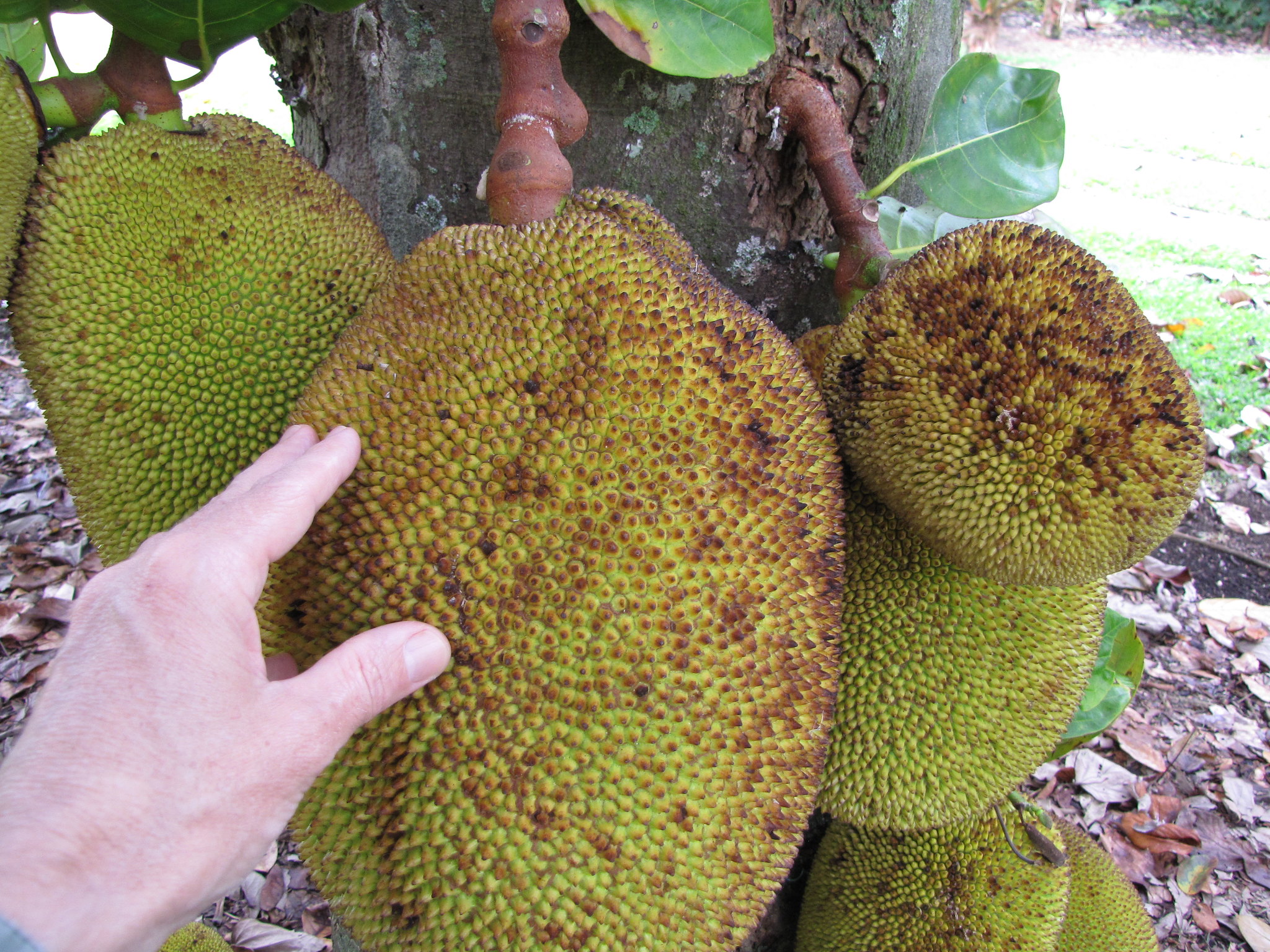
What is jackfruit?
All you need to know about jackfruit, the extraordinary fruit of Artocarpus heterophyllus
Contents
If you have travelled to Southeast Asia, Brazil, or the Caribbean, the jackfruit has certainly caught your eye at local market stalls. It must be said that the jackfruit, also known as “jaque” or “ti-jac” in Creole, and “jackfruit” for English speakers, is quite impressive! Primarily due to its size and weight, but also because of its appearance: it is indeed covered with a tough skin, consisting of protrusions ranging from greenish to yellowish, soaked in latex and therefore very sticky to the touch. If you haven’t had the chance to fly to these distant lands, you may have encountered jackfruit in an exotic products shop or in the organic section of your supermarket, cut into pieces and packed in a tin! The fruit of the Artocarpus heterophyllus boasts numerous nutritional benefits, making it a favourite among vegans and vegetarians. We’ll tell you all about this amazing jackfruit.
It all starts with a tree
At the origin of jackfruit is a tree, the jack tree or Artocarpus heterophyllus. A very beautiful tropical tree, originally from India and Bangladesh, belonging to the Moraceae family, just like the fig tree (Ficus carica) or the breadfruit tree (Artocarpus altilis), with which it is often confused. In its natural state, the jack tree can reach 15 to 20 metres in height with a spread of 2.5 m. Its leaves, which are evergreen and ovate to elliptical, measure 20 to 30 cm. Dark green in colour, they are slightly rough to the touch. However, it is mainly its fruits that impress, as they can weigh up to 50 kg and measure between 50 and 90 cm long. In fact, they are the largest fruits in the vegetable kingdom! These fruits also pique curiosity as they grow directly on the trunk.
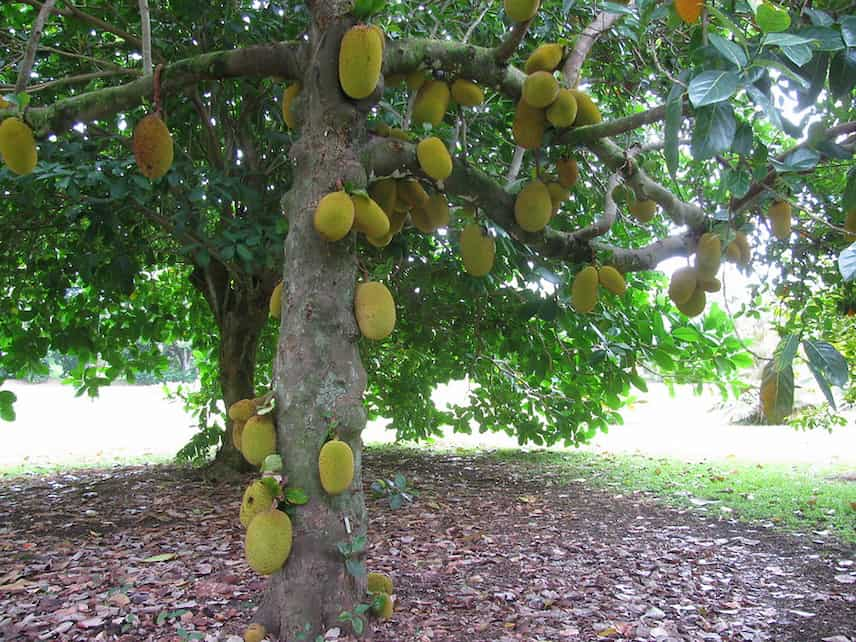
Jackfruit grows directly on the tree or main branches
Widely cultivated around the world from Southeast Asia to Brazil, including the Caribbean, Haiti, French Guiana, and New Caledonia, the jack tree requires warmth and humidity. Conditions that are rarely found in our latitudes! So, if you want to sow seeds and grow a jack tree in France, you will need a heated greenhouse.
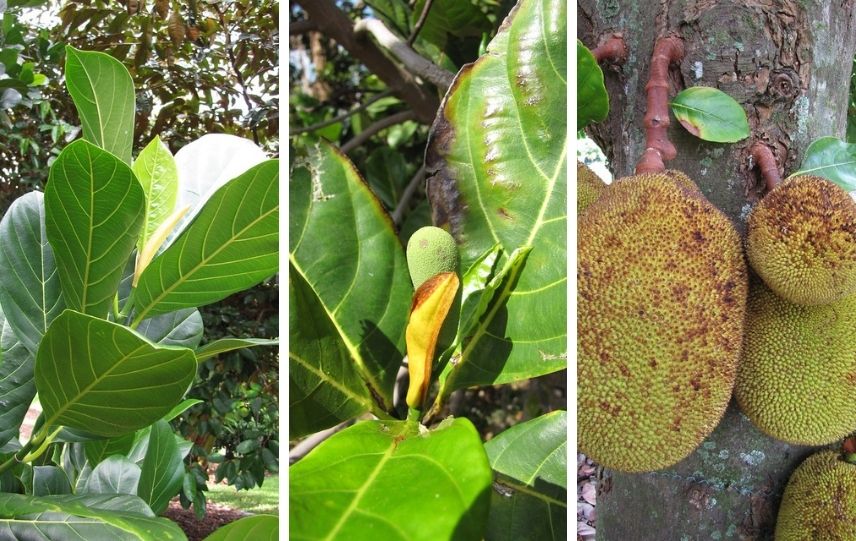
Leaves and fruits of the jack tree
For Artocarpus heterophyllus will not survive our winters, even mild ones, as it is frost-sensitive and quite tender. If you can provide these living conditions, plant it in a large container. It will only reach 2.5 to 3 m and may produce a few fruits. However, if you want to taste jackfruit, it might be wiser to visit your favourite Asian products shop.
The characteristics of the jackfruit
Jackfruit stands out from other fruits due to its almost oversized dimensions. It could be confused with another exotic fruit, the durian, but the roughness of its skin is less pronounced. A strong, musky smell can be detected if the fruit is well ripe. Once the thick bark is cut away, one discovers a white, yellow, or orange pulp, partitioned into segments that contain between 50 and 500 seeds, ovate and rather brown, depending on the varieties.
Raw, the pulp of the jackfruit is slightly sweet and rather mild, reminiscent of the flavours of mango, pineapple, apple, and banana. In short, it is a fruit that evokes exoticism without possessing its best attributes.
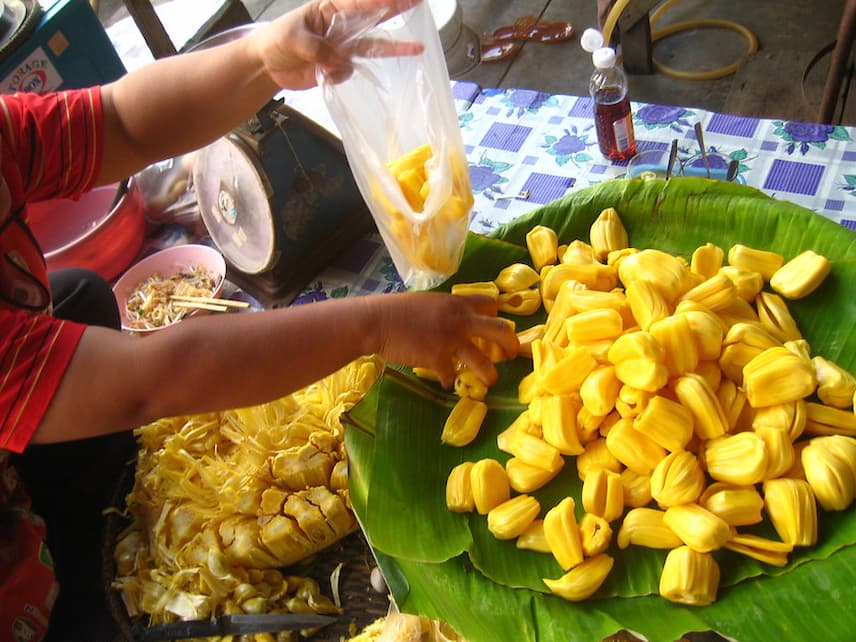
When the fruit is not overly ripe, it is consumed cooked because, in appearance, its fibrous, rubbery flesh, slightly crunchy, resembles shredded chicken or pork. But it is tougher and lacks much flavour. In brief, cooked jackfruit flesh needs to be seasoned to provide a pleasurable taste experience, especially since it easily absorbs spices and sauces.
As for the seeds, they are toxic when raw. Therefore, to consume them, they must be roasted or boiled. In Southeast Asia, they are often eaten as a street snack.
To make life easier for us Westerners, who are not accustomed to such large fruits with tough skin, young jackfruit is sold in cans, prepared in brine.
Jackfruit, a fruit with a thousand nutritional virtues
If jackfruit is generating interest, it is primarily due to vegetarians and vegans. The jackfruit is indeed a fruit rich in plant proteins, making it an alternative to meat. Moreover, its fibrous flesh resembles that of chicken or pork! However, its benefits are not limited to this protein content, as jackfruit also boasts a good amount of slow sugars, fibre, antioxidants, vitamins (A, B1, B2, B9), and minerals, particularly iron, magnesium, calcium, selenium, copper, potassium, and manganese. Its only drawback is its calorie content of around 95 kcal/100 g.
How to cook this record-breaking fruit?
The “green” fruit in preserves
To cook jackfruit found in cans and especially to achieve a shredded texture, it is essential to cut off the hard end and remove the seeds. Additionally, simmering the jackfruit pieces beforehand helps to tenderise them.
The fruit that is not quite ripe is eaten cooked in hot, savoury dishes. For instance, in Réunion, a cari is prepared. It can also be stir-fried with tofu, Asian noodles, and crunchy vegetables, accompanied by a Thai sauce blended with plant-based cream. Shredded, curry, and biryani of jackfruit
Shredded, curry, and biryani of jackfruit
Many prepare it as a vegetarian burger, in curry simply cooked in coconut milk, or fried in a taco with spices. In India, it is cooked in biryani, a dish made with basmati rice, spices, vegetables, and eggs, where jackfruit replaces meat. Less exotically, jackfruit can also be made into a blanquette!
The ripe fruit in dessert
The pulp of the fully ripe fruit is consumed as is, in a salad, as compote, jam, ice cream, or candied fruit… In India, it is prepared as payasa, a dessert made with coconut milk, brown sugar, and cardamom. It can also be incorporated into a mousse, a cake, or made into fried fritters… The challenge is to manage to open it or to find fresh ones in a shop!
- Subscribe!
- Contents
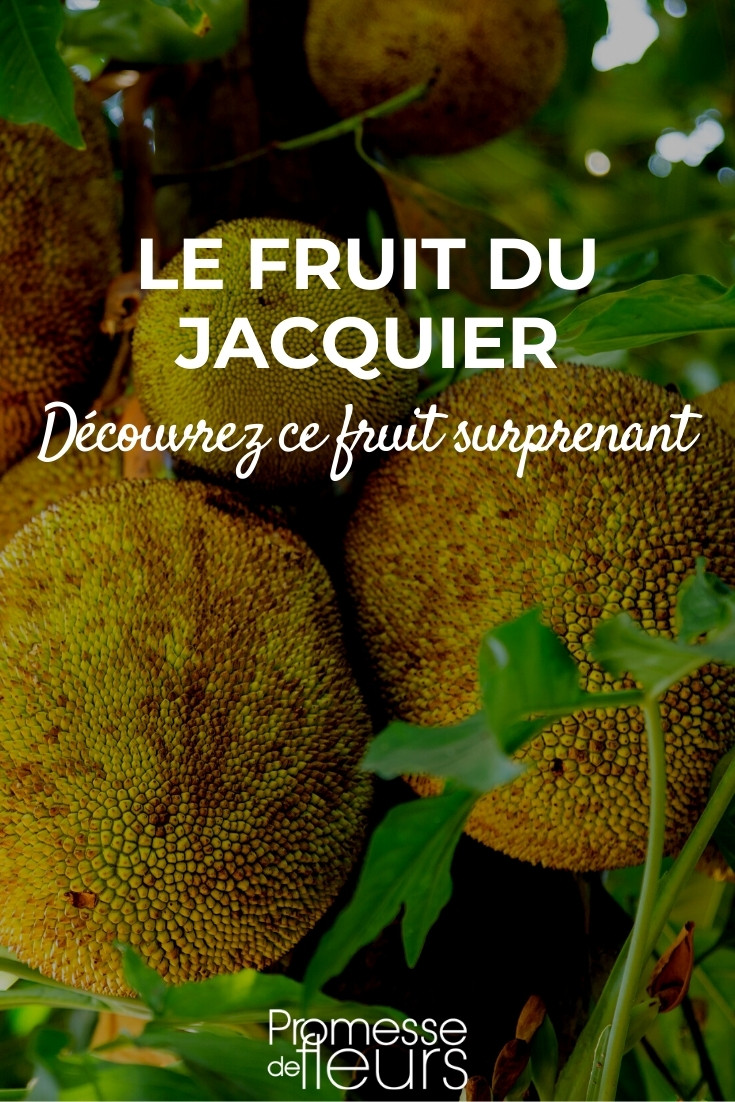































Comments